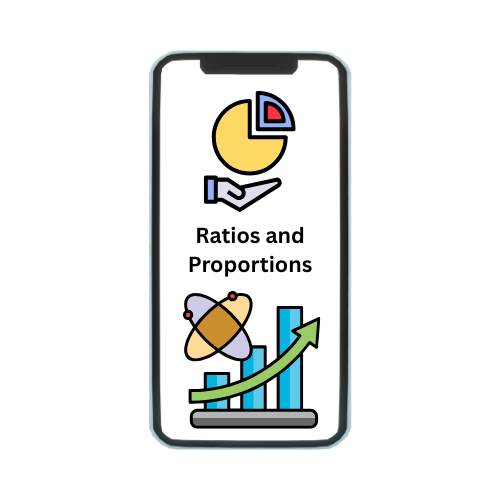The Baltic Exchange is a pivotal institution in the global maritime industry, renowned for its role in providing essential information and services related to shipping and trading. Established in London in 1744, the Exchange has a long-standing history of facilitating the buying and selling of shipping services, primarily through its indices and assessments that track shipping rates for various routes and vessel types. It operates a platform where shipping companies, traders, and brokers can exchange information and negotiate freight rates, ensuring transparency and efficiency in maritime commerce. The Baltic Exchange’s indices, such as the Baltic Dry Index, are crucial for gauging the health of the shipping market, reflecting fluctuations in shipping costs and offering insights into global economic trends. With its extensive network and industry expertise, the Baltic Exchange continues to be a central hub for maritime and trading activities, influencing decisions and strategies within the shipping sector.
What is the Baltic Exchange?
The Baltic Exchange is a leading institution that provides crucial services and information for the global shipping and maritime industry. Founded in London in 1744, it specializes in the assessment and reporting of freight rates and market conditions through its various indices and assessments. The Exchange facilitates the trading of shipping services by offering a platform where ship owners, charterers, and brokers can negotiate and transact, promoting transparency and efficiency in maritime trade. One of its most well-known indices, the Baltic Dry Index, tracks the cost of shipping bulk commodities like coal and iron ore across various routes, providing valuable insights into global economic activity and shipping market trends. The Baltic Exchange’s comprehensive data and market insights are essential for stakeholders across the shipping industry, helping them make informed decisions and navigate the complexities of maritime commerce.
Key Functions of the Baltic Exchange
The Baltic Exchange serves several key functions within the maritime industry, each contributing to its role as a central hub for shipping and trading activities:
- Market Information and Indices: The Exchange provides critical market information through its various indices, such as the Baltic Dry Index (BDI), which measures the cost of shipping bulk commodities and reflects market conditions across different routes and vessel types. These indices are essential for assessing market trends and economic health.
- Freight Rate Assessment: It offers assessments of freight rates for different types of vessels and routes, helping stakeholders understand current market rates and make informed decisions about shipping contracts.
- Trading Platform: The Baltic Exchange acts as a platform where ship owners, charterers, and brokers can negotiate and finalize shipping agreements. This facilitates transparent and efficient trading of shipping services.
- Benchmarking: The Exchange’s indices serve as benchmarks for contracts and financial instruments in the shipping industry, providing a standardized reference point for pricing and trading.
- Industry Standards and Practices: It contributes to the development and promotion of industry standards and best practices, ensuring that transactions and operations within the shipping market are conducted with consistency and integrity.
The Importance of the Baltic Exchange
The Baltic Exchange holds significant importance in the global maritime and trading sectors due to several key factors:
- Market Transparency: By providing reliable and up-to-date freight rate indices and market data, the Baltic Exchange enhances transparency in shipping costs. This transparency helps stakeholders make informed decisions and negotiate fair contracts.
- Economic Indicator: The Baltic Dry Index (BDI) and other indices published by the Exchange serve as crucial economic indicators. They reflect the health of the shipping market and broader economic trends, offering insights into global trade dynamics and economic activity.
- Benchmarking and Standardization: The Exchange’s indices and assessments serve as industry benchmarks, standardizing freight rates and contract terms. This standardization helps streamline transactions and reduce disputes between parties in the shipping industry.
- Facilitating Trade: By providing a centralized platform for the negotiation and trading of shipping services, the Baltic Exchange facilitates smoother and more efficient trade operations. It connects ship owners, charterers, and brokers, promoting effective communication and deal-making.
- Market Insight and Analysis: The detailed market reports and analyses produced by the Exchange offer valuable insights into market trends and forecasts. These insights aid stakeholders in strategic planning and risk management, helping them navigate the complexities of the maritime industry.
Structure and Operations
The structure and operations of the Baltic Exchange are integral to its role in the maritime industry, comprising several key components:
- Governance and Organization: The Baltic Exchange operates under a governance structure that includes a board of directors and various committees responsible for overseeing its activities and ensuring compliance with industry standards. This structure helps maintain the integrity and effectiveness of the Exchange’s operations.
- Indices and Assessments: The Exchange is renowned for its indices, such as the Baltic Dry Index (BDI), which measure shipping rates and market conditions. These indices are calculated based on data collected from a network of brokers and market participants, providing a comprehensive view of the shipping market.
- Trading Platform: The Baltic Exchange provides a platform for the trading of shipping services, where ship owners, charterers, and brokers can negotiate and finalize contracts. This platform facilitates efficient and transparent transactions, connecting various stakeholders in the shipping industry.
- Data Collection and Reporting: To generate its indices and market assessments, the Exchange collects data from a wide range of sources, including market participants and brokers. This data is analyzed and reported regularly, ensuring that the information provided is accurate and reflective of current market conditions.
- Market Research and Analysis: The Baltic Exchange conducts in-depth market research and analysis, producing reports that offer insights into shipping market trends, forecasts, and economic indicators. This research supports strategic decision-making for industry stakeholders.
- Regulatory Compliance: The Exchange adheres to regulatory standards and industry best practices, ensuring that its operations are conducted with transparency and fairness. This compliance helps build trust and credibility within the maritime industry.
- Member Services: The Baltic Exchange offers various services to its members, including access to market data, trading platforms, and industry reports. These services support members in their business operations and enhance their ability to navigate the shipping market effectively.
How the Baltic Exchange Influences Shipping Markets
The Baltic Exchange exerts significant influence on shipping markets through several key mechanisms:
- Market Benchmarks: The Baltic Exchange’s indices, such as the Baltic Dry Index (BDI), act as crucial benchmarks for shipping rates across various routes and vessel types. These benchmarks help set pricing standards and influence the terms of shipping contracts, shaping market dynamics and pricing strategies.
- Price Discovery: By providing up-to-date freight rate assessments and market data, the Exchange aids in the price discovery process. This means that shipping rates are determined based on real-time market conditions, which helps ensure that prices reflect the current state of supply and demand.
- Economic Indicators: The Baltic Exchange’s indices serve as economic indicators, offering insights into global economic trends and trade flows. For instance, fluctuations in the BDI can signal changes in global trade activity, commodity demand, and overall economic health, thereby influencing market expectations and decisions.
- Market Transparency: The Exchange enhances transparency in the shipping market by regularly publishing detailed reports and data. This transparency reduces information asymmetry among market participants, leading to more informed decision-making and fairer pricing.
- Liquidity and Efficiency: By providing a platform for the trading of shipping services, the Baltic Exchange promotes market liquidity and operational efficiency. This platform connects ship owners, charterers, and brokers, facilitating quicker and more effective transactions and reducing the friction in the shipping market.
Conclusion
In conclusion, the Baltic Exchange stands as a cornerstone of the global maritime industry, fundamentally shaping and supporting the dynamics of shipping markets. Its comprehensive suite of indices, including the renowned Baltic Dry Index, provides essential benchmarks and economic indicators that guide pricing, risk management, and strategic decision-making across the industry. By enhancing market transparency, facilitating efficient trading, and offering critical market data and insights, the Exchange plays a pivotal role in ensuring that shipping operations are conducted with clarity and fairness. Its influence extends beyond simple market assessments, impacting global trade flows, economic forecasting, and the development of industry standards. As a vital institution, the Baltic Exchange continues to contribute significantly to the efficiency and stability of maritime commerce, reflecting its enduring importance in the interconnected world of global trade.







